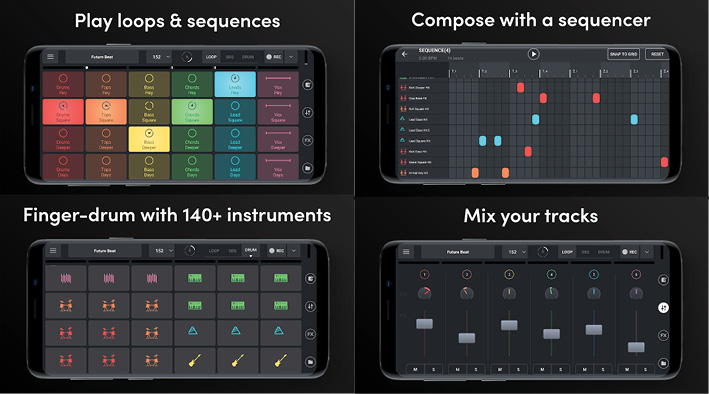Secondary Music at Home 5
Y7-9 Doctor Who Theme; and Remix Live: experimenting with music | Y10-11 Sampling music: ABBA and Madonna; and Chords | Y12-13 Beethoven: Music and Maths
 Enjoy these structured musical activities that we have prepared especially for you to continue your learning at home.
Enjoy these structured musical activities that we have prepared especially for you to continue your learning at home.
Years 7-9:
Doctor Who Theme
Head over to the BBC Ten Pieces websiteand find the section about the Doctor Who theme...
1. Listen to the sounds...
Watch the second video – "Listen to the opening credits of the Doctor Who Theme arranged by Delia Derbyshire". Think and answer the following questions...
-
What timbres (sounds) can you hear in the recording?
How do these sounds make the music depict space?
-
Write your answers down, or discuss them with someone in your house.
2. Finding out about more...
Now watch the first video – "Segun Akinola introduces the Doctor Who theme..." and answer the following questions...
-
1. When the theme tune was first on television, how were soundtracks made? Could the music be made on a computer?
2. Delia Derbyshire created the Dr Who theme using entirely electronic sounds. How was this ground-breaking for the time?
3. How does the pitch (low/high sounds) change when the tape is sped up or slowed down?
4. How did Segum Akinola change Delia Derbyshire’s original theme when he composed his version?
3. Compare and contrast
Now you know more about the original theme, listen to the most up to date theme and compare and contrast them, answering the questions below.
We have put both side by side below to make this easier for you.
-
How are the timbres (sounds) used differently?
What does the 2020 version have that the original version does not?
Which one do you think sounds more 'other worldly'?
Which one do you prefer? Why?
Years 7-9:
Remix Live!
This is a great free app for experimenting with sounds to make music... Compose using this powerful Step Sequencer... play loops, drums on pads and make tracks in minutes. Shape your sound by editing samples and adding powerful effects.

Years 10-11:
Sampling Music: Madonna and ABBA
Continuing from the theme of sampling in Issue 4, we're going to look at an article from NME – a specialist music magazine – about Madonna using a sample from ABBA's Gimme Gimme Gimme (1979) in her song Hung Up (2005).
NME Madonna and Abba article
Listen to ABBA – Gimme Gimme Gimme (1979) using the YouTube video below. Listen carefully to things like instruments, voices, tempo, melody and anything else you spot. Jot down a few notes so you don't forget what you heard.
Now, listen to Madonna – Hung Up (2005) using the YouTube video below and answer the questions below. You might need to listen several times.
Grab a piece a paper and jot down some answers to these questions:
- 1. What sound effect is used in the introduction?
2. Why did they use this sound effect?
3. What effect has been used on the voice?
4. Describe in detail how the sample from Gimme Gimme Gimme enters
5. Compared to the original ABBA track, describe three ways in which the sample has been altered
6. The sample is then stopped. At which point in the song does it re-enter?
7. Name two other instrumental sounds used on this track?
Read more about sampling?
There is a really interesting piece on sampling on the BBC Music Introducing website about copyrights, sampling and the law... take a look....
Years 10-11:
Chords, and how they work...
We know that a chord is when you play more than one note at a time, but have you ever wondered how those chords are structured? One of the fundamental differences is between major and minor chords. You might have played these on a keyboard before.
Musiclab have made a free online tool for you to hear the notes that create these major and minor chords. By playing the notes that make the chord in an arpeggio, it lets you – the learner – hear how the chord is built.
Follow the link below and play around with this whilst consolidating your understanding of how chords work.
Go to the Musiclab website and explore...
Years 12-13:
Beethoven...
2020 sees the 250th anniversary of the birth of the famous classical composer Beethoven.
Check out this TED talk – Music and Maths: The Genius of Beethoven to see how he used wave frequency combinations that music producers of today have to think about...